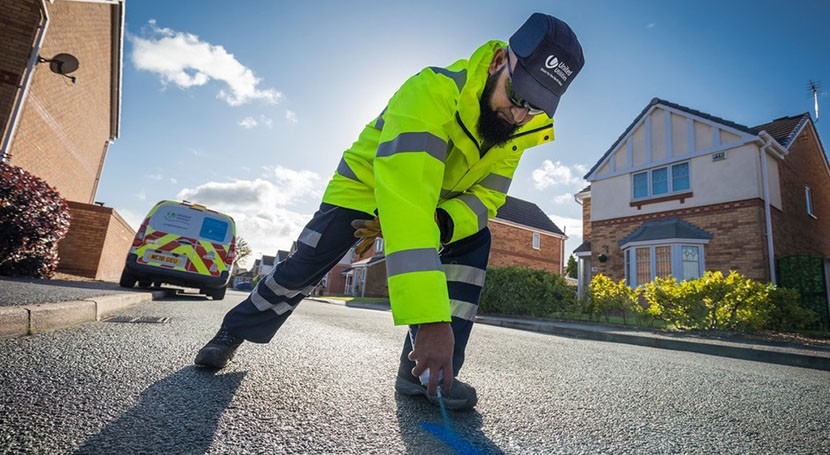Top Water Leak Detection Methods to Secure Your Residential Or Commercial Property from Water Damage
Top Water Leak Detection Methods to Secure Your Residential Or Commercial Property from Water Damage
Blog Article
Cutting-edge Solutions for Very Early Detection of Water Leakages in Buildings and Framework
From cutting-edge leak detection modern technologies to the deployment of IoT sensors for real-time monitoring, the landscape of leak prevention is developing quickly. Automated water flow evaluation systems are reshaping how leakages are recognized and addressed, leading the means for an aggressive strategy to water leak discovery.
Advanced Leak Detection Technologies
Advanced leak detection technologies, geared up with advanced sensors and algorithms, play a crucial role in quickly recognizing and pinpointing water leakages in different settings. These technologies employ a mix of acoustic, thermal, and electro-magnetic noticing techniques to spot leakages properly. Acoustic sensors identify the sound of getting away water, permitting exact localization of the leak source. Thermal imaging identifies temperature changes created by water leak, giving another efficient technique for leak identification. Electro-magnetic sensors can identify changes in electro-magnetic fields triggered by water, supplying yet one more layer of leakage discovery capability.

IoT Sensors for Real-Time Tracking
In the world of modern-day water leakage detection, the combination of IoT sensing units for real-time surveillance stands for a pivotal development in improving aggressive leakage detection capabilities. These sensors provide constant tracking of water supply, giving real-time data on water circulation prices, pressure variants, and temperature adjustments. By leveraging IoT technology, these sensors can find also the tiniest abnormalities in water use patterns, making it possible for very early recognition of possible leakages prior to they intensify right into major problems.
IoT sensors send information to a central system, where sophisticated algorithms evaluate the info and generate informs or notifications when abnormalities are detected. This real-time surveillance capacity permits home owners or facility supervisors to immediately attend to leaks, minimizing water damages, lowering repair service expenses, and conserving water resources.
In addition, IoT sensing units can be integrated with structure monitoring systems, enabling for automatic responses to detected leakages, such as shutting off water valves or activating pumps to alleviate the effect of leaks. On the whole, you could try these out the application of IoT sensors for real-time surveillance considerably boosts the performance and efficiency of water news leak detection in structures and facilities.
Machine Discovering Algorithms for Leak Prediction

One secret advantage of making use of maker knowing for leak forecast is its capability to continuously discover and enhance its precision gradually. As more information is gathered and fed right into the formula, it can refine its forecasts and adapt to transforming conditions, ultimately raising the dependability of leak discovery systems.
Furthermore, machine understanding algorithms can aid in determining subtle indications of leaks that might go unnoticed by standard monitoring approaches. water leak detection. By analyzing intricate information collections in real-time, these algorithms can offer early warnings and signals, permitting for prompt intervention and preventive maintenance to minimize potential water damages and linked costs
Making Use Of Thermal Imaging for Leakage Detection
Thermal imaging modern technology Continued provides an encouraging approach for detecting water leaks in numerous systems and frameworks. By utilizing infrared radiation and temperature level differences, thermal imaging video cameras can recognize hidden leaks that are not quickly noticeable to the naked eye. When water leaves from pipelines or frameworks, it frequently alters the temperature level of the surrounding location, developing temperature level differentials that thermal electronic cameras can capture. These temperature irregularities are then equated right into noticeable photos, highlighting the exact location of the leak.
One of the crucial advantages of thermal imaging for leak detection is its non-intrusive nature. Overall, the usage of thermal imaging innovation enhances the efficiency and precision of water leakage detection, making it a useful tool for keeping the stability of buildings and infrastructures.
Automated Water Circulation Analysis Equipments
Exactly how can automated water flow evaluation systems change the discovery and administration of leakages in numerous systems and frameworks? Automated water circulation evaluation systems provide a positive approach to leakage detection by constantly keeping track of water flow rates and patterns. By developing baseline information, these systems can swiftly determine discrepancies that may suggest a leakage, enabling punctual intervention to prevent considerable damages.
These systems utilize advanced algorithms to analyze real-time information and provide immediate signals when anomalies are spotted, permitting swift activity to be taken. Furthermore, automated water flow analysis systems can be incorporated with structure monitoring systems or IoT platforms, boosting overall effectiveness and making it possible for remote monitoring capacities.
Furthermore, the information gathered by these systems can be made use of for predictive maintenance purposes, aiding to recognize potential weak factors in the framework prior to leaks occur. On the whole, the implementation of computerized water flow evaluation systems can substantially boost leakage discovery and monitoring practices, ultimately leading to set you back financial savings, lowered water wastage, and raised sustainability in structures and facilities.

Verdict
In verdict, the assimilation of innovative leak detection modern technologies, IoT sensors, artificial intelligence algorithms, thermal imaging, and automatic water circulation evaluation systems offers ingenious services for very early discovery of water leakages in structures and infrastructure. These innovations allow real-time monitoring, prediction of leaks, and efficient detection techniques to avoid water damage and wastage. Implementing these services can assist in keeping the stability and sustainability of water supply in various settings.
Report this page